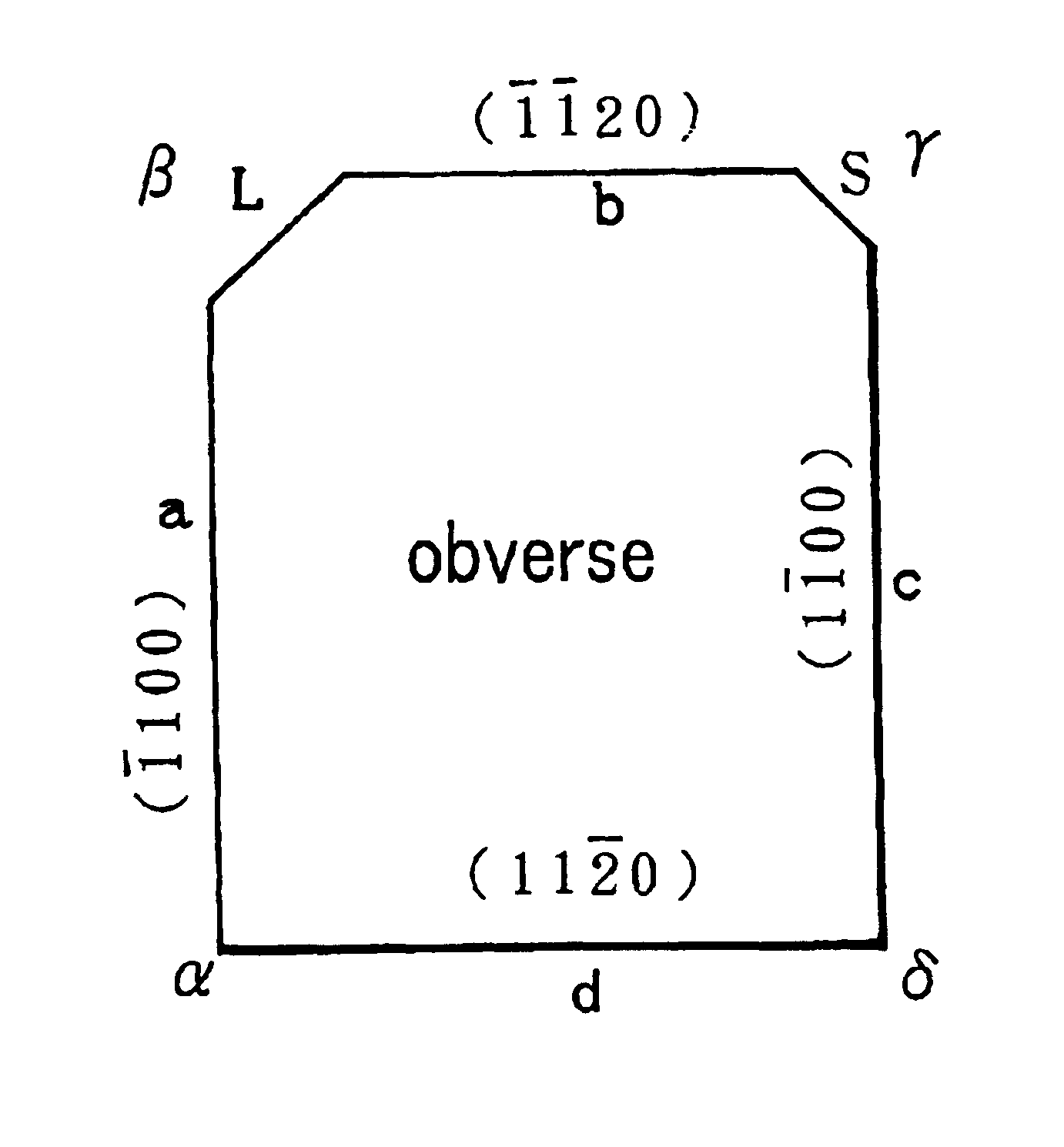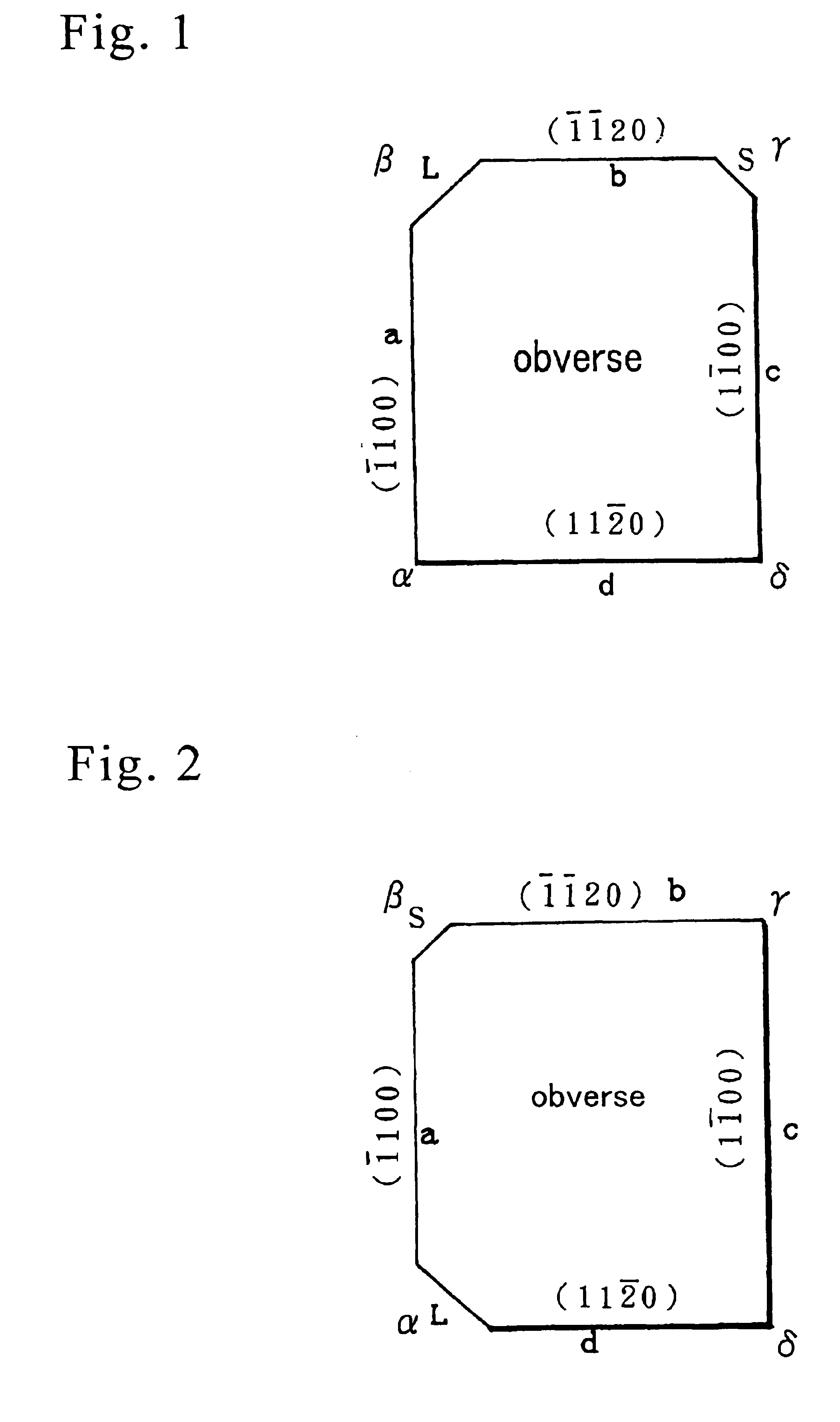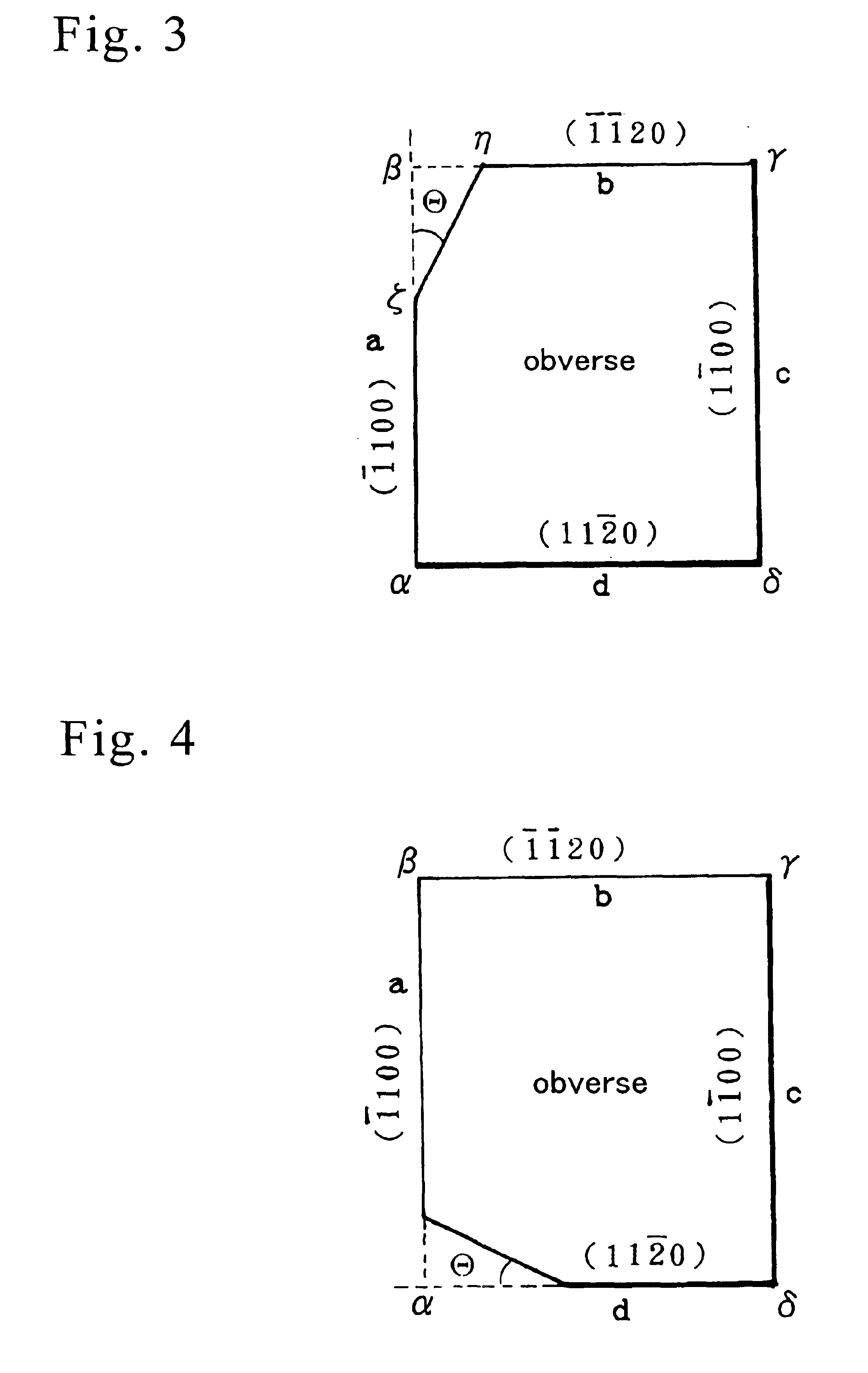Obverse/reverse discriminative rectangular nitride semiconductor wafer
a nitride semiconductor and rectangular technology, applied in the direction of polycrystalline material growth, crystal growth process, after-treatment details, etc., can solve the problems of difficult human eye sight to discern the rough/smooth texture of a transparent gan wafer, roughness is liable to absorb and maintain fine particles, and the roughness is difficult to discern rough/smooth texture. , to achieve the effect of reducing the adhesion of particles, reducing the distortion of the wafer, and high smooth
- Summary
- Abstract
- Description
- Claims
- Application Information
AI Technical Summary
Benefits of technology
Problems solved by technology
Method used
Image
Examples
Embodiment Construction
[0068]The present invention makes longer / shorter neighboring slanting edges at corners aligning clockwise on an obverse surface of a rectangular nitride semiconductor wafer having a (0001) obverse surface (C-plane), a (11-20) side (A-plane) and a (1-100) side (M-plane).
[0069]Otherwise, the present invention makes an asymmetric slanting edge at a corner inclining at an angle between 5 degrees and 40 degrees to an obversely-counterclockwise side. These are geometrical obverse / reverse identification marks for finding an obverse surface by checking the order of longer / shorter edges or the inclination angle. Alternatively, the present invention makes asymmetric bevelling (chamfering) of different obverse bevelling width (g) and reverse bevelling width (h). Favorably, obverse bevelling (g) should be smaller than the reverse bevelling (h). A glimpse of side bevelling teaches an obverse surface.
[0070]Alternatively, the present invention writes a series of characters on an obverse or reverse...
PUM
 Login to View More
Login to View More Abstract
Description
Claims
Application Information
 Login to View More
Login to View More - R&D
- Intellectual Property
- Life Sciences
- Materials
- Tech Scout
- Unparalleled Data Quality
- Higher Quality Content
- 60% Fewer Hallucinations
Browse by: Latest US Patents, China's latest patents, Technical Efficacy Thesaurus, Application Domain, Technology Topic, Popular Technical Reports.
© 2025 PatSnap. All rights reserved.Legal|Privacy policy|Modern Slavery Act Transparency Statement|Sitemap|About US| Contact US: help@patsnap.com



